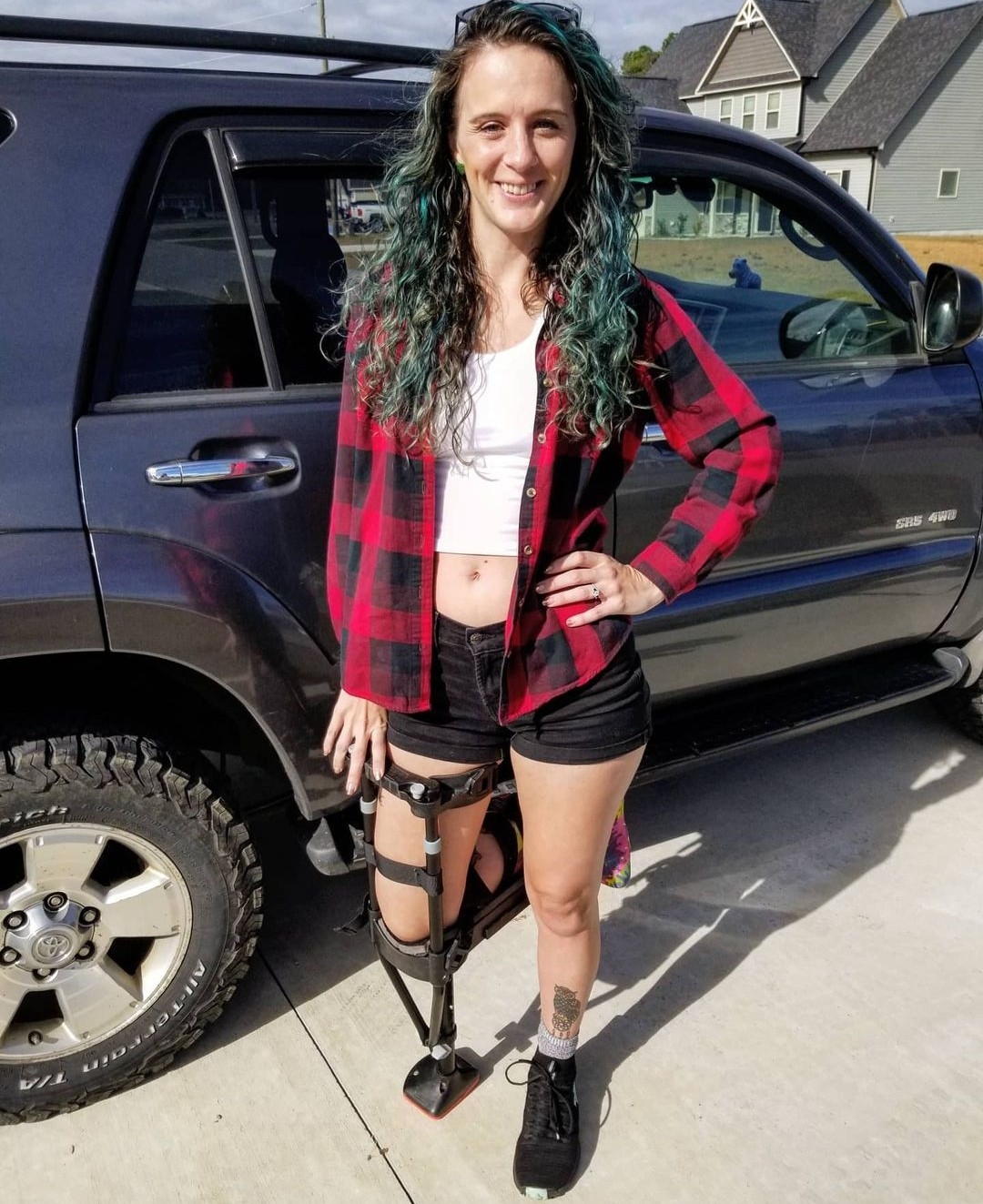By: Chelsea Layton, Living with CMT1A
When you think of living life in your early 30s, what comes to mind? Pursuing a career you’re passionate about? Traveling the world? Training for a half marathon? Starting a family?
At age 31, I want to experience all of these things, but it’s hard when your body isn’t capable of doing what you want it to do.
I’ve had Charcot-Marie-Tooth disease type 1A (CMT1A) my entire life. My father had a 50% chance of passing CMT onto his children, and I pulled the short straw.

From a young age, the arches in my feet were deformed, and I experienced challenges with balance and coordination. I participated in sports but was always aware that I ran funny and tripped more than my peers. I loved playing soccer, but after every game, I had to wrap my ankles in ice because of sprains and injuries.
10 Surgeries in 10 Years
When I was in my early 20’s, I started undergoing surgical procedures to correct my deformities and injuries from CMT. After each recovery period, something else would show up, and I’d need another surgery. I’ve had 10 foot surgeries within the past 10 years. What started as simple plantar fasciotomies have turned into reconstructive surgeries, bone infusions, nerve amputations, bone transplants and tendon transfers. I’ve even had three cadaver bones to date.
My most recent surgery took 8 hours. My doctor restructured the ball of my foot to compensate for the pitting and pinching of the nerves to reduce the chances of needing more nerves amputated.

The Worst Part Isn’t Physical
Surgical recovery has been the hardest for me. It typically takes between 6 to 12 weeks to recover from each procedure. I have to take a leave of absence from my job, lay with my toes above my nose, spend most of the day alone, and give up my independence. I’m unable to shower on my own, walk without crutches, and have become very socially isolated, especially during COVID-19 quarantine. Given that I’ve had so many surgeries in such a short period of time, you can imagine how difficult it has been to maintain steady employment, let alone a full-time career. All of that is on hold due to my CMT.
Mentally, CMT takes a huge toll because I’m an extremely active person with many dreams I want to accomplish. I’ve lost my career because of CMT and struggle daily with finding my passion and worth in this world. The mental aspects of CMT might be as bad, if not worse, than the physical pain.

Taking Matters into My Own Hands
Giving hope and spreading awareness isn’t enough anymore. The medical technologies exist to end CMT; we now need to fund the research to make that possible. A treatment for CMT would mean no longer worrying about when the next surgery will be or working tirelessly to maintain the muscles I’ve managed to gain. It would mean not living in fear of bringing a future child into the world with CMT, or wondering if I will be a suitable parent due to my own struggles with the disease. A treatment would mean my father, brother and cousins wouldn’t have to worry about their futures with CMT, nor would all of the kids and teenagers I’ve met with the disease.
In 2020, I became an ambassador for the CMT Research Foundation and have loved working with a like-minded group of individuals who want to end CMT. I remember getting goosebumps when CEO Susan Ruediger said her ultimate goal was to close down the organization because CMT treatments and cures were readily available and the disease no longer existed. It feels empowering to dedicate my time and energy to advocating and fundraising for an organization that wants what I want — to get my life back and take control over my future and the future of my family. I started a personal fundraising page and am trying to raise $3,000 by the end of the year to ensure several critical research projects that could help my family and me continue and launch in 2021. You can check out my page here.
Let’s Give More than Hope
If you have considered donating to the CMT Research Foundation, I encourage you to learn more about who they are as an organization. This is what inspires me to fundraise and stay involved:
- They invest the dollars they raise in research exclusively focused on finding treatments. The list of research projects they’re currently involved in is impressive.
- Their board is composed of individuals who have CMT or have a personal connection to the disease.
- Their end goal is to put themselves out of business because they’ve done all there is to do to end CMT. That’s what more than hope means to me.
You can give Chelsea and everyone living with CMT more than hope by making a donation to the CMT Research Foundation. We currently have multiple promising research projects that are ready for funding. Your gift will ensure these projects can launch and continue in 2021.
